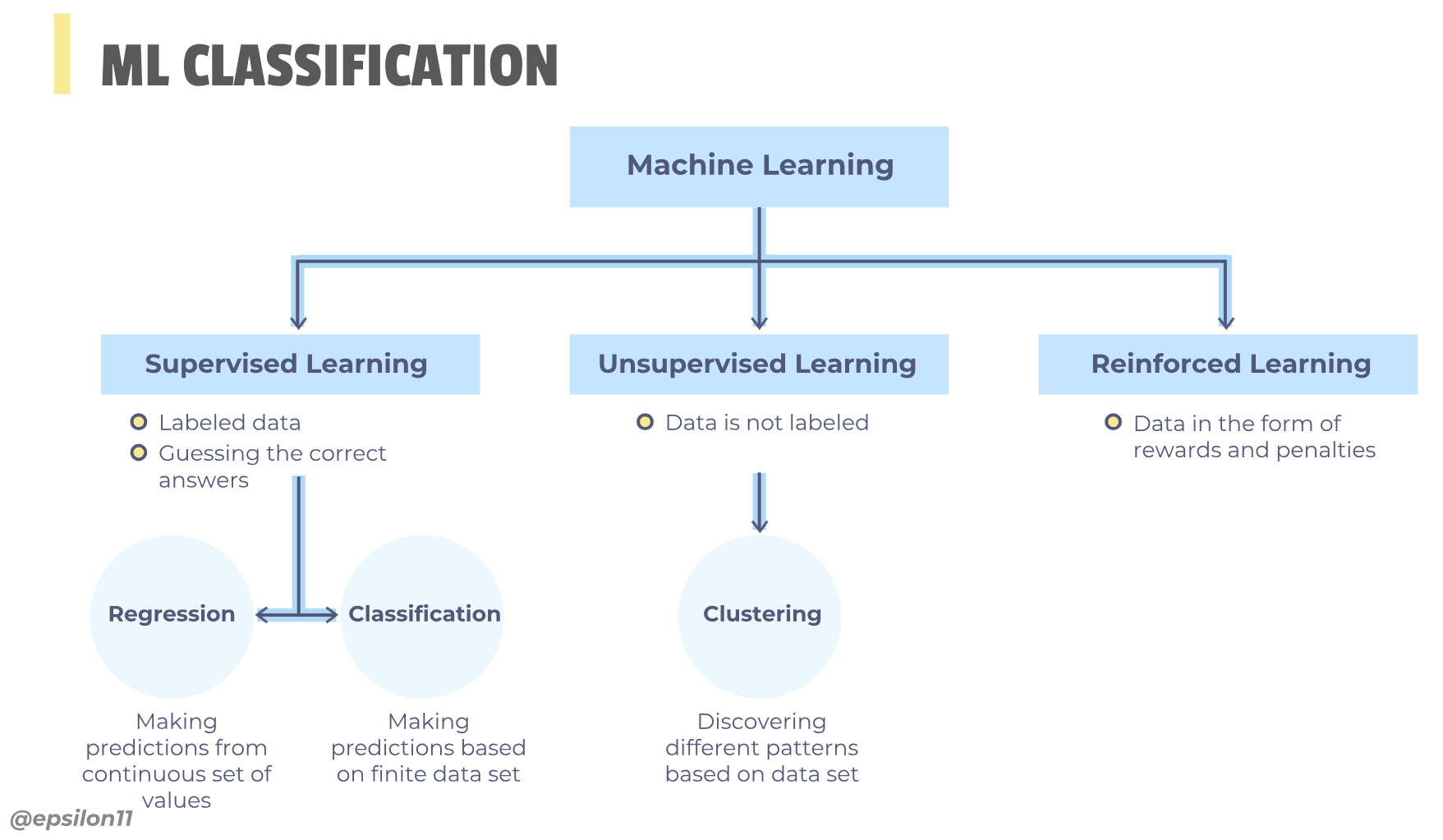High Level Overview of Machine Learning Classification - ML 101
We have heard of machine learning (ML) used in various applications to discover different patterns and predict different values but quite often there is a big question of "What are the different types of ML classifications and how they apply to the real world?". So, I wanted to give a high level overview of ML classification and its uses, to help everyone better understand the concepts behind ML.
ML is classified into 3 types-
Supervised Learning (SL)-
In SL, we give labeled data sets to train ML models. Based on the learning from past experiences we are trying to predict future values. There are 2 types of SL models that are used to solve real world problems.
Regression Model
These models are used to make predictions based on continuous set of values. For example - Say you have a Restaurant, and want to predict "What is the tip amount from the total bill amount, for a particular day". In this example, we are trying to make predictions on the tip amount which is a continuous set of values i.e the tip amounts could be 5%, 11%, 15% and so on... They keep varying and so we use a regression model to make predictions
Classification Model
These models are used to make predictions on a finite set of values. For example - Say for the same Restaurant, you want to predict "How much tip a Male gives compared to a Female, for a given bill amount", Here you are trying to make predictions on Male/Female which is a finite data set i.e there are only 2 values possible. In this situation, we will use a classification model
NOTE:The values we want to make predictions on, is commonly referred to as "Labels" and the other values that help to make predictions on the labels are called "Features". In the above 2 models, the tip amount and Male/Female are Labels respectively. The other known values that help to make the predictions such as the time of the day, restaurant location, bill amount etc are the Features.
Real life uses of SL-
From a group of email predicting which is spam
From a stream of audio, extracting the text
Hulu, Netflix and Amazon use SL for recommending TV Shows, Movies you would like, based on the viewing patterns
Unsupervised Learning (UL)
In UL, we use non-labeled data setsto train the ML model. The objective is to find different patterns in the data sets. The model used for UL is called Clustering models.
Real life uses of UL-
Giving an image and getting a 3D model of it
Cellular companies like AT&T, Verizon use UL to do Target Segmentation i.e they give targeted advertisements to different user groups in a region and use UL for it
Reinforced Learning (RL)
RL is based on the concept of reward function i.e rewarding good/bad behavior. Data is in the form of rewards and penalties. For example - The way a baby learns to walk is a raw example of RL. When a baby is born it initially crawls, then when it tries to stand up it hits its head against the wall and it hurts, So, now it knows not to do that. Then it falls down when trying to stand up when its feet is intertwined, so, now it knows not to do that. Then finally, it takes the support of the couch and stands up, so now it knows it can try to walk. In each of the cases the baby learns based on the mistakes it committed which is similar to penalizing bad behavior and finally learns to walk which is similar to good behavior being rewarded.
Real life uses of RL-
RL is used to train ML models used in autonomous vehicles. For example - we feed in different images of roads some containing left turn, right turn, straight road, hair pin turn etc. As we feed these images we let the model know which is the expected outcome based on the image. For example - When we feed the model an image of the road with a left turn and if the car continuous to go straight, we immediately let the model know it is the wrong outcome. So we are penalizing bad behavior. When we feed it an image of a straight road and if the car goes straight, then we let the ML model know that, it is the expected outcome. So you reward the good behavior
Google uses RL to reduce energy consumption in its data centers
This is basic 101 of Machine Learning Classification. Knowing this will help you understand real life use cases and help you have a constructive discussion about it.
